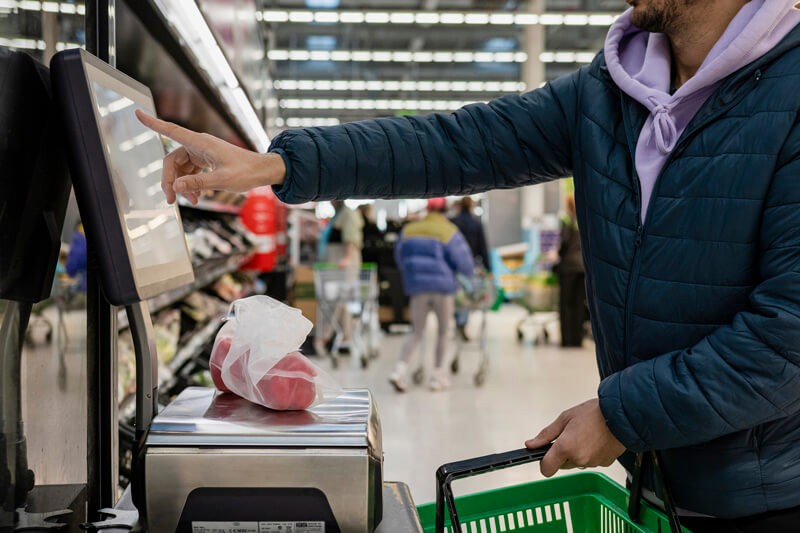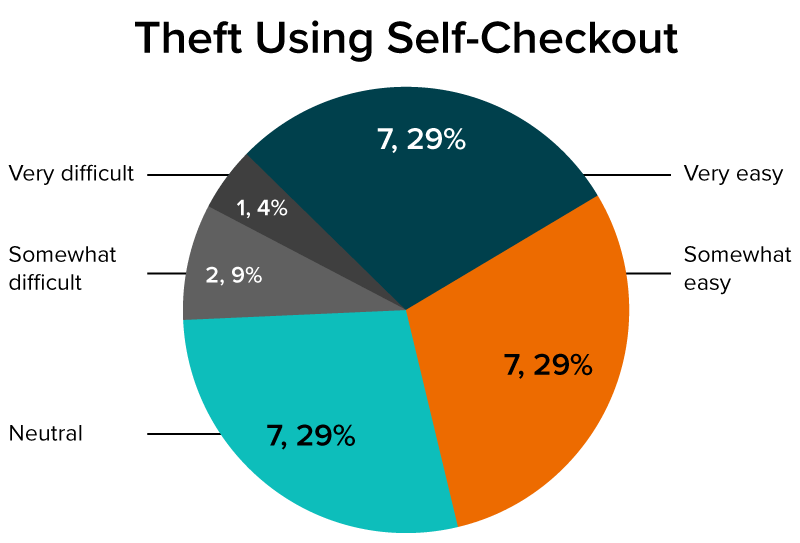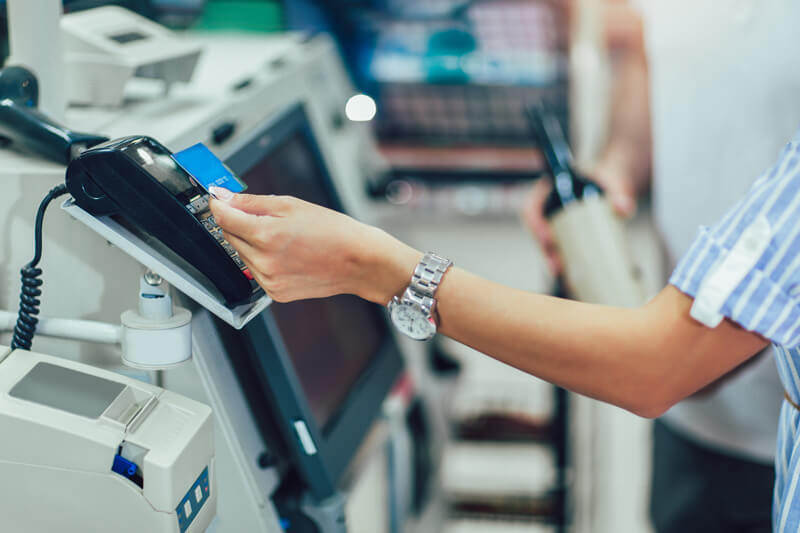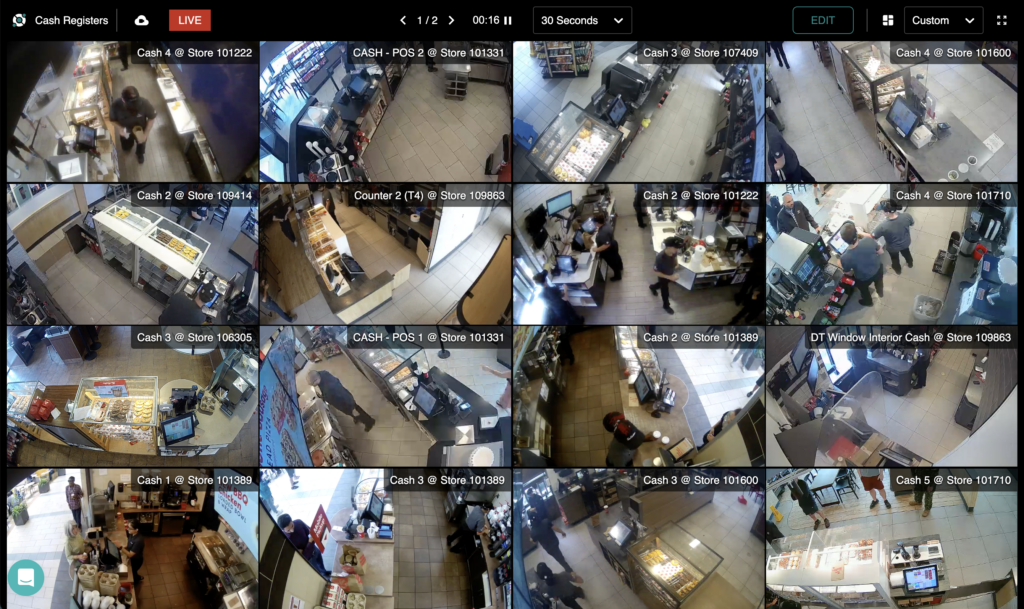Self checkout theft is on the rise, making it one of the most frequently attempted types of theft in the retail and grocery industries. With this comprehensive guide we hope to walk you through ways in which we can offer you some solace from this type of theft.
The allure of self-checkout stems from its promise of convenience and efficiency. With busy lifestyles and a desire for autonomy, customers appreciate the ability to complete their purchases quickly and independently. The streamlined process bypasses long queues, allowing shoppers to control their own pace and experience. Furthermore, self-checkout offers a sense of empowerment, enabling individuals to handle transactions on their terms. This appeal to convenience, autonomy, and empowerment has propelled self-checkout to widespread popularity, making it a staple in modern retail environments.
However, it can also lead to even more opportunities for theft, which is why self checkouts have greater POS security requirements.
Point of sale (POS) systems, which are what self checkouts are, are sometimes referred to as “point of theft” systems because they are often the center of theft rings. Unfortunately, this is especially true for self checkouts.
Self checkout theft is very common. One recent poll found that 69% of self-checkout users think it makes stealing easier — and 15% of shoppers admit to purposely doing so.
What’s scarier is that in the same article that quotes that statistic, it also says that despite the potential consequences of stealing (emotional or otherwise), 44% of thieves say they’ll likely do it again.

Building a self checkout with theft in mind is no easy task. There’s a classic episode of NPR’s Planet Money podcast on self checkout security that discusses this challenge. One main reason is that retail and grocery stores have a lot of items, and those items have wide weight and size ranges.
This makes it hard for some traditional loss prevention systems to deal with self checkout theft. There’s an added problem. Many consumers don’t feel like self checkout fraud is theft at all. They call it “gaming the system” or “compensation for doing the grocer’s job for them.”
This can make the biggest theft deterrence ineffective: shame. Most people will feel guilty for doing something that they feel is wrong. If consumers don’t even consider self checkout theft stealing, then improving the security of kiosks becomes much harder.
Loss prevention media recently performed an interview study to understand the psychology of self checkout theft.
Here are their results:

Only 13% of interviewees thought it was difficult or very difficult to steal from a self checkout. Conversely, over half of respondents considered it easy (29%) or very easy (29%) to steal from a self checkout.
Is self checkout having a reckoning?
According to a recent BBC article the technology has really not delivered on expectations for many different companies. Globally, stores are shifting their stance on these machines, with a growing consensus among analysts and industry insiders that self-checkout has been detrimental for both consumers and retailers.
Many retailers, despite the initial installation costs, are shifting gears on their approach to self-checkout technology. Take Target, for example, which is now imposing limits as of 2023 on the number of items self-checkout customers can purchase at once. Walmart, on the other hand, has opted to remove self-checkout kiosks from certain stores to combat theft. Similarly, across the pond, British supermarket chain Booths has scaled back on self-service kiosks due to customer complaints about their sluggishness and unreliability.
In the U.S., Dollar General, a rapidly expanding retail giant, is also reassessing its strategy. Despite the investment, CEO Todd Vasos announced plans to boost staffing levels in stores, particularly in the checkout area, according to a December earnings call.
Despite the challenges associated with self-checkout systems, it’s important to acknowledge their potential benefits. These systems can offer increased convenience and efficiency for customers, allowing them to bypass long lines and complete transactions at their own pace. Additionally, self-checkout can help retailers streamline operations and reduce labor costs. While there are valid concerns regarding theft and reliability, it’s unlikely that self-checkout systems will disappear entirely anytime soon. With ongoing advancements in technology and consumer preferences for autonomy, self-checkout is likely to remain a fixture in retail environments, albeit alongside traditional checkout options.
What are different types of self checkout theft and fraud?
The Atlantic recently reported on three main types of self checkout theft:
- The banana trick
- The pass around
- The switcheroo
The cutesy names are further evidence that self checkout thieves see it as a game.

The banana trick
The banana trick is punching in a cheaper item’s code while weighing a heavier item. This shoplifting tactic gets its name from bananas being one of the cheapest fruits.
The process is pretty simple. The shoplifter places an expensive item on the scale, for example steak, and then keys in the code for a cheaper item, such as bananas.
The pass around
The pass around method works by simply transferring some items to the bagging area without scanning them. The shoplifter scans one item and then places it along with a second expensive item in a bag at the same time.
Most self checkout systems include scales to measure the weight of scanned items. However, the variance in weight of many common items at grocery stores means that it is still possible to trick the scale into thinking no extra weight has been added to the bag.
The switcheroo
The switcheroo is a new form of one of the oldest grocery store theft scams. When shopping, the shoplifter switches the barcode of an expensive item with that of a cheaper one.
Previously, it was performed by picking a similar looking item, for example changing the code of one type of meat for another. Now, because the main self checkout security measure is a scale, it’s more important to pick items that weigh a similar amount.
This opens up the possibility of much bigger price differences between the scanned item and real product, as it becomes possible to, for example, scan tenderloin as potatoes.
How do you prevent self checkout theft, fraud and up your self checkout security?
Before you abandon your self checkout plans entirely, there are ways to reduce theft and fraud. Here are some ways to improve self checkout security as part of your grocery and retail store security system.
Security cameras, of course
As an obvious, but important factor, security cameras can increase the deterrence factor of your self checkouts. When people think there is a high chance they will get caught stealing, they are less likely to attempt to shoplift.
Beyond the deterrence value of security cameras, some self checkout systems, including the ones being rolled out at Walmart, use AI cameras to match the look of items to a database of images.
By comparing the weight and image to a database, the system can better alert staff to potential discrepancies.
Cameras in the right place, positioned correctly and with the right software performing with them can make a world of difference in self checkout security.
Security camera video analytics software
Once you have security cameras in place, a video analytics platform can pair the video feed with the data from your self checkouts to make it easy to audit transactions for theft.
Solink’s Event Search function enables you to quickly find discount abuse, unusual purchase patterns, and more. That way you can focus on the high-risk transactions. The Solink platform also features what is called the ‘video wall’, a state-of-the-art solution that offers a more efficient, integrated approach to security, streamlining your security operations with advanced features and user-friendly interfaces. It allows for somebody to be watching from above as well as on the floor when it comes to your self checkout security.
Attentive customer service clerks
If your customer service clerks are treating paying customers as shoplifters, this can backfire. It’s important that your staff is polite and helpful and not suspicious or accusatory. In fact, it is the mere presence of staff that has the biggest impact on your self checkout security.
To reduce theft, it is important to humanize the act of stealing. As mentioned earlier, many people stealing from the self checkout see it as not really theft or just a game. By putting a face to the crime, theft is likely to go down.
Furthermore, the fact that an employee is watching will also make some think twice about their odds of getting caught. Staff doesn’t need to be intrusive, just visible, to add this level of deterrence.
Transaction limits
As mentioned earlier regarding what a company like Target is doing, transaction limits refer to predetermined restrictions on the number of items or the total value of goods that can be processed through self-checkout terminals in a single transaction.
These limits are set by the store management and are aimed at controlling the flow of items through the checkout process, deterring theft, and promoting adherence to store policies. By implementing transaction limits, stores can minimize the risk of abuse or misuse of self-checkout systems, ensuring fair and efficient transactions for all customers. Additionally, these limits can help prevent instances of accidental or intentional under-scanning of items, thereby contributing to overall loss prevention efforts.
Random audits or audits at the door
Random audits involve periodic and unannounced inspections of transactions processed through self-checkout terminals. During these audits, store personnel review a sample of transactions to ensure compliance with scanning and payment procedures. By conducting random audits, stores can deter theft and fraudulent activities at self-checkout stations. These inspections serve as a deterrent to potential offenders while also providing an opportunity to identify and address any irregularities or issues in the checkout process. Additionally, random audits help maintain accountability among customers and reinforce the importance of honesty and integrity in self-checkout transactions.
Security scale
Security scales are standard equipment for many self checkouts. They weigh each item as it is placed on the baggage area to make sure it matches the product specifications in a database. Some scales even use AI to constantly update the specifications within ranges to decrease false alerts.
Solink provides the best self checkout security for retail and grocery stores
Solink brings the tools you need to enhance the security of your self checkout lanes. By pairing video with POS data, you can quickly find and review high-risk transactions.
To see how Solink improves the security of your self checkouts, sign up for a demo today.
Self checkout security faqs
What are the common types of theft techniques used at self-checkout kiosks?
The common theft techniques at self-checkouts include the “banana trick,” where customers ring up more expensive items as cheaper ones; “pass around,” where patrons bypass the scanner; and “switcheroo,” where shoplifters swap barcodes or tags.
How can grocery stores enhance security at self-checkout stations to prevent theft?
Grocery stores can enhance security by providing attentive customer service, utilizing security scales to detect weight discrepancies, installing cameras directly above the self-checkout, and employing AI video analytics software to identify suspicious behavior.
What role does integrating POS data with video security play in mitigating theft risks at self-checkouts?
Integrating POS data with video security plays a crucial role in mitigating theft by allowing for the correlation of transaction data with video footage, enabling easy identification and investigation of suspicious activities or discrepancies at self-checkouts.

Solink stands at the forefront of security solutions, excelling in loss prevention and asset protection for businesses. Our content is rich in industry expertise and crafted to provide actionable insights and innovative strategies. We empower businesses to enhance their security systems, optimize operations, and protect their assets more effectively. Discover how our advanced cloud video management system can transform your security approach.

